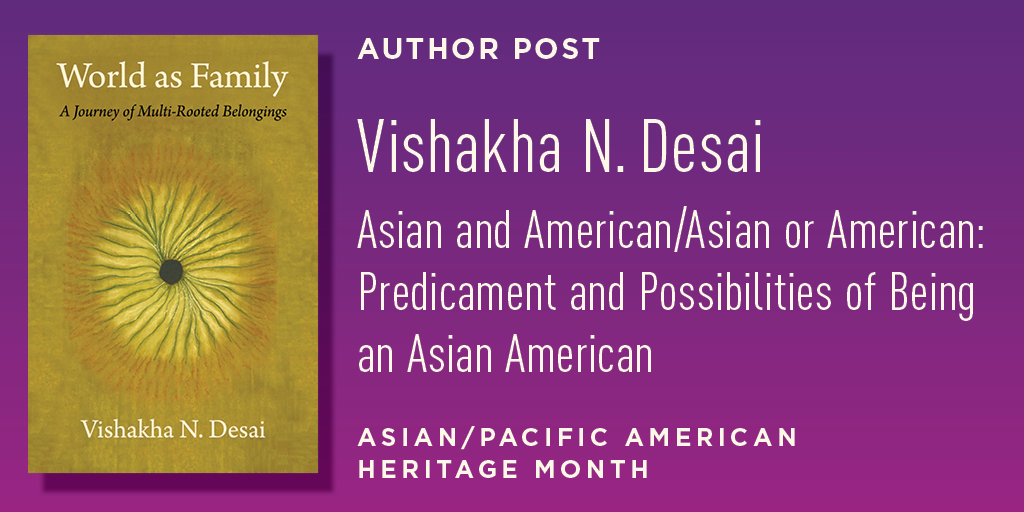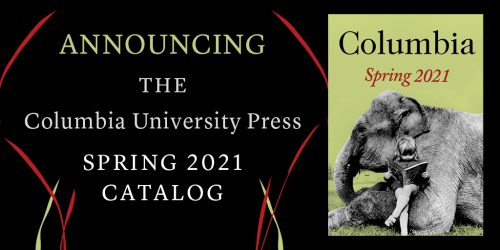Asian and American/Asian or American: Predicament and Possibilities of Being an Asian American
Vishakha N. Desai

The first time I personally identified with the term Asian American was in 1993, when I had the opportunity to organize the first major exhibition of Asian American art exploring the issues of multicultural identities at the Asia Society, Asia/America: Identities in Contemporary Asian American Art. Designed to explore the experiences of cultural “in-betweenness” as an essential ingredient of artistic creativity by immigrant artists of Asian origins and those who came here at a young age, the exhibition elicited divergent responses. Some patrons grumbled: “why is this at the Asia Society? It should be at the Whitney. Essentially these are American artists.” Even some artists questioned the premise: “Why are we being seen at the Asia Society, an institution known for showing old traditional art from Asia with little interest in contemporary expressions from anywhere? (we had not yet shown contemporary art, even from Asia, as that would be the next big exhibition). We will get placed in the Asian bucket, as always, and not be considered American enough.” Underlying these responses was the undeniable perception that, in the U.S, people of Asian origin would always have to deal with too much or too little of one thing or another: either not Asian enough (like the “authentic” Asians who lived far away in the continent of Asia) or too Asian, not like “authentic Americans.”
I had been an American citizen for thirteen years and had lived in the country for a good two decades by the time we organized this show. When I first arrived in the U.S. as an exchange student at the age of seventeen, there was no doubt that I was an Indian living in America for a little while. Then I returned to the U.S. and ended up becoming a museum educator, gradually adopting the role of an interpreter of Indian culture, and subsequently becoming a scholar of Indian art. Primarily, an Indian living in America, but gradually growing into my American identity.
My personal experience had found a new home in the Asian American experience.
The images in the exhibition, ranging from small sculptures of movable homes by Indian artist Zarina to a wonderful installation of the Korean American artist Yong Soon Min, titled Dwelling, spoke to me directly. Dwelling consisted of a diaphanous Korean dress (hanbok) hung from the ceiling, dry branches suggesting human architecture visible through the dress and lit from within. A stack of books lay underneath the dress, while the words of the contemporary Korean American poet Ko Un gently floated around it: “To us . . . a birthplace is no longer our home. Nor is home the place where we grew up.” It perfectly summed up my own sense of fluid, bicultural belonging at the time. No longer just an interpreter of a faraway culture from a bygone era, I saw myself as a full participant in expressions of here-and-now. My personal experience had found a new home in the Asian American experience.
In that moment, I also realized that what connected all of us—Americans of Asian origin—was less our Asian cultural backgrounds and more our American experience. The category of Asian Americans is a construct, made real by the census listings, but our American experience is real. All immigrants who come to this country, go through the experience of becoming American, one person at a time, one story at a time, and Asians are no different. However, for them, even becoming Asian American is an evolutionary process and takes many different turns. The problem is that because of their non-European origins and brown skin, they often get put in a box that allows for little flexibility. They are asked to become American, but not expand the notion of what it actually means to be American. The perception of Asian Americans as the “other”—not American enough—can result in dehumanizing them, leading to violence and hatred, even murder, as we have seen this year.
In that moment, I also realized that what connected all of us—Americans of Asian origin—was less our Asian cultural backgrounds and more our American experience.
During this month of May, celebrated as Asian American Heritage month, let us learn to celebrate not only the dizzying array of cultural backgrounds that Asian Americans bring to to the U.S. but also the multiplicity of paths they develop in becoming Americans. Asian Americans are the fastest growing group in the U.S., but 59 percent of them are immigrants. Their ties to homelands remain strong, and their desire to maintain deep connections to their home country is high, but that doesn’t mean they are any less connected to their adopted country.
If anything, in this third decade of the twenty-first century, when the crises of the pandemic and climate remind us that we must learn to live together as a global community, Asian Americans and other immigrant communities can show the way to multiple belongings, which are at the heart of creating a global family. Through their experience of being Asian and American, they can create a more expansive sense of connectivity beyond national borders and cultural differences. This very idea of America, a place where multiple belongings are at the heart of identity as an immigrant nation, needs nurturing, as it can serve as a model of belonging in the world that we need so desperately at this moment.
Vishakha N. Desai is senior adviser for global affairs to the president, chair of the Committee on Global Thought at Columbia University, and author of World as Family: A Journey of Multi-Rooted Belongings.



